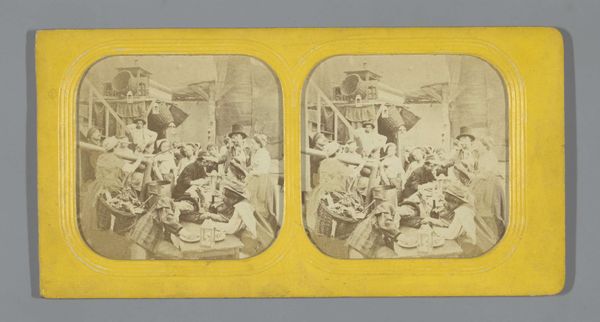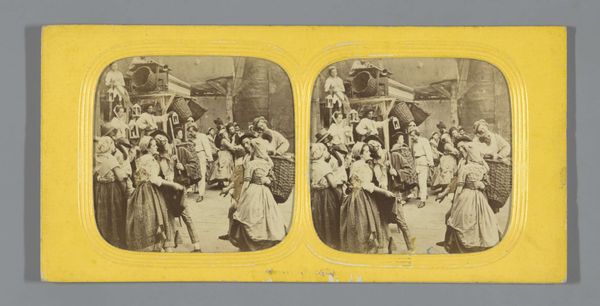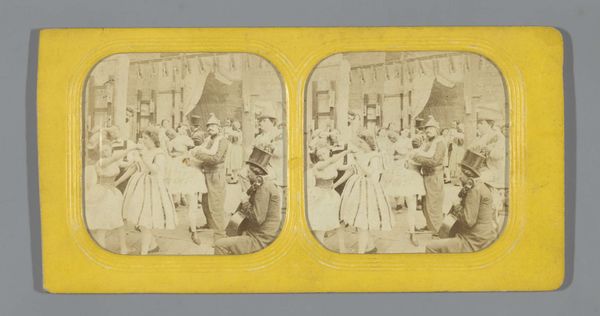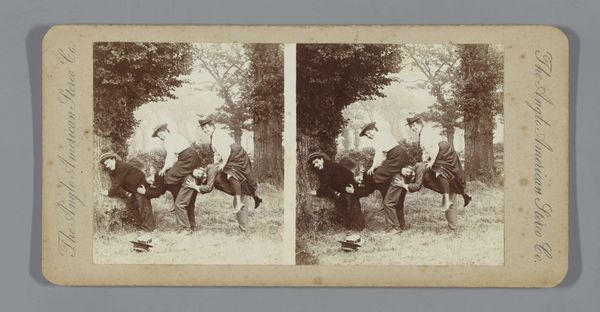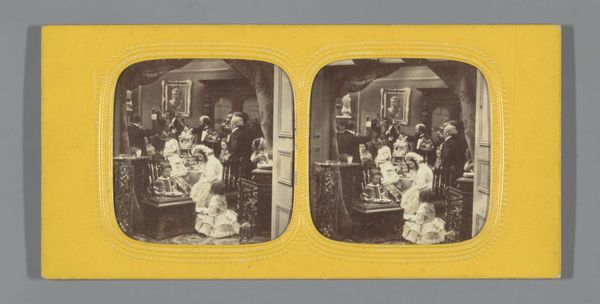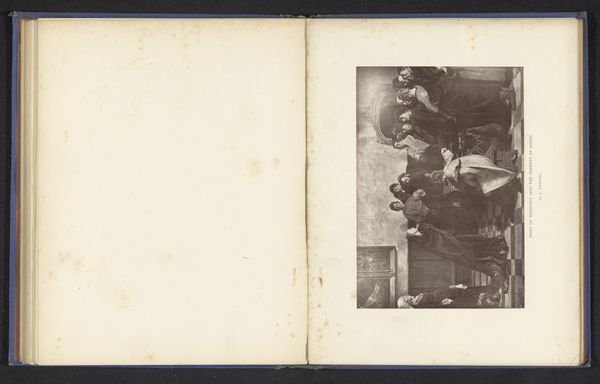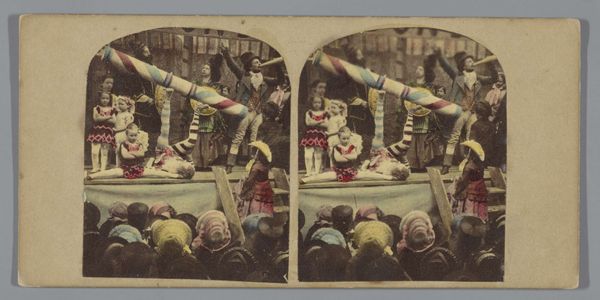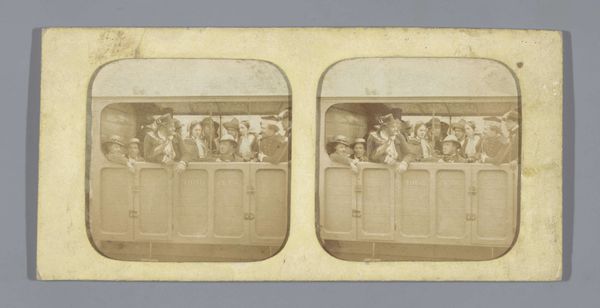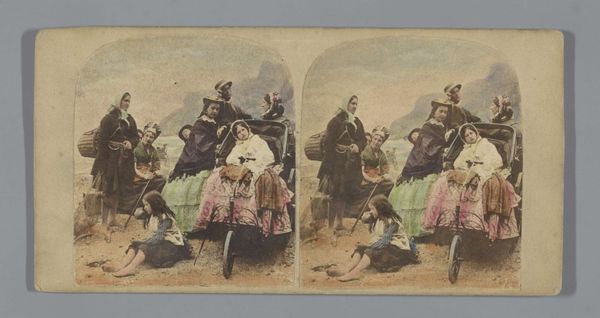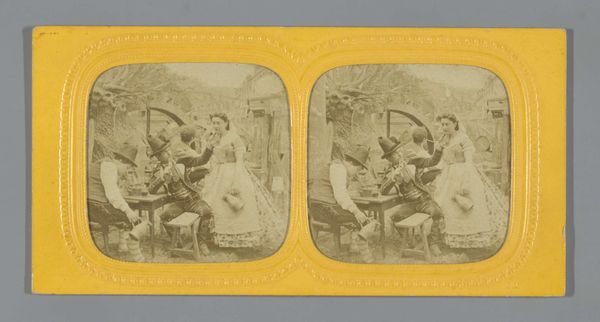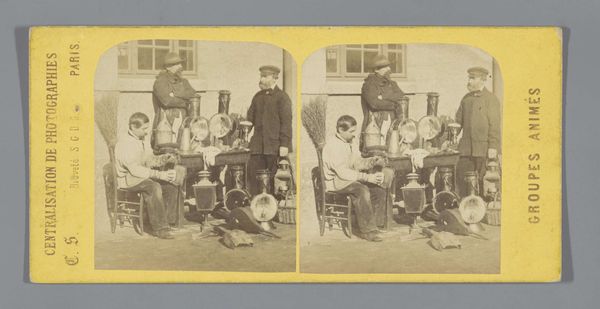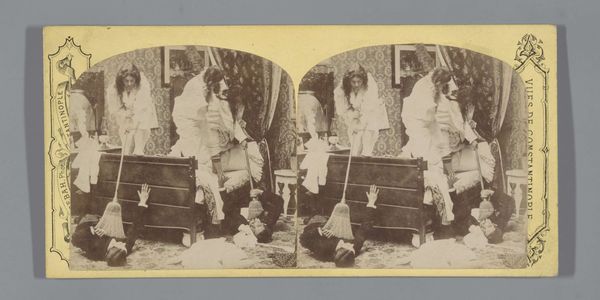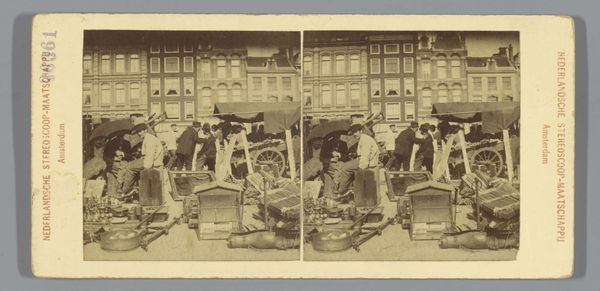
National Sports. The Rail! The Road!! The Turf!!! The Settling Day!!!! before 1864
0:00
0:00
Dimensions: height 85 mm, width 175 mm
Copyright: Rijks Museum: Open Domain
Curator: Well, the chaos captured here is palpable. It is overwhelming. Editor: Indeed! Let's take a closer look at this gelatin silver print by Alfred Silvester, titled "National Sports. The Rail! The Road!! The Turf!!! The Settling Day!!!!" It’s an incredibly descriptive title! It seems to date from before 1864. Curator: I find myself immediately drawn to the mass of bodies; you can almost smell the sweat and horses. There’s a real texture to the whole scene; it appears densely layered. Editor: Absolutely. Group portraits like these reflect very specific social and cultural moments. Sporting events of the time were highly charged public affairs, influencing social hierarchies and even the political landscape. Consider the accessibility, who has access and why. Curator: Which directly relates to the use of a photographic print. Think about the mechanics behind capturing such a large group— the logistical considerations, the role of light, and even the chemicals and processes Silvester would have had to master. The mass production of this medium granted accessibility and therefore expanded cultural perceptions. Editor: Precisely, photography democratized portraiture but within a framework. Note the predominantly upper-class demographic depicted here. The image acts as a social record, preserving attitudes and privileges, even as the technology itself was breaking down existing norms. It speaks volumes about who controlled representation and why. The elite participating in leisure activities versus documenting everyday labor of those who are under represented is glaring. Curator: Do you think the composition is effective, conveying the Romantic elements intended in genre paintings through a photo? Editor: I believe so. It almost glorifies a specific facet of Victorian society, portraying a bustling scene while quietly reinforcing established social structures and values of the time. Curator: Indeed. These small details, like access to these materials or being granted the social permission to witness an event and even photograph it all impact who art is for. Editor: I agree completely, our analysis today offers a fascinating glimpse into the complex interplay between artistic representation and historical realities in pre-1864 England. Curator: Well said. I think considering the means of production gives context to the narrative this piece depicts, broadening our understanding and connection with the artwork.
Comments
No comments
Be the first to comment and join the conversation on the ultimate creative platform.
